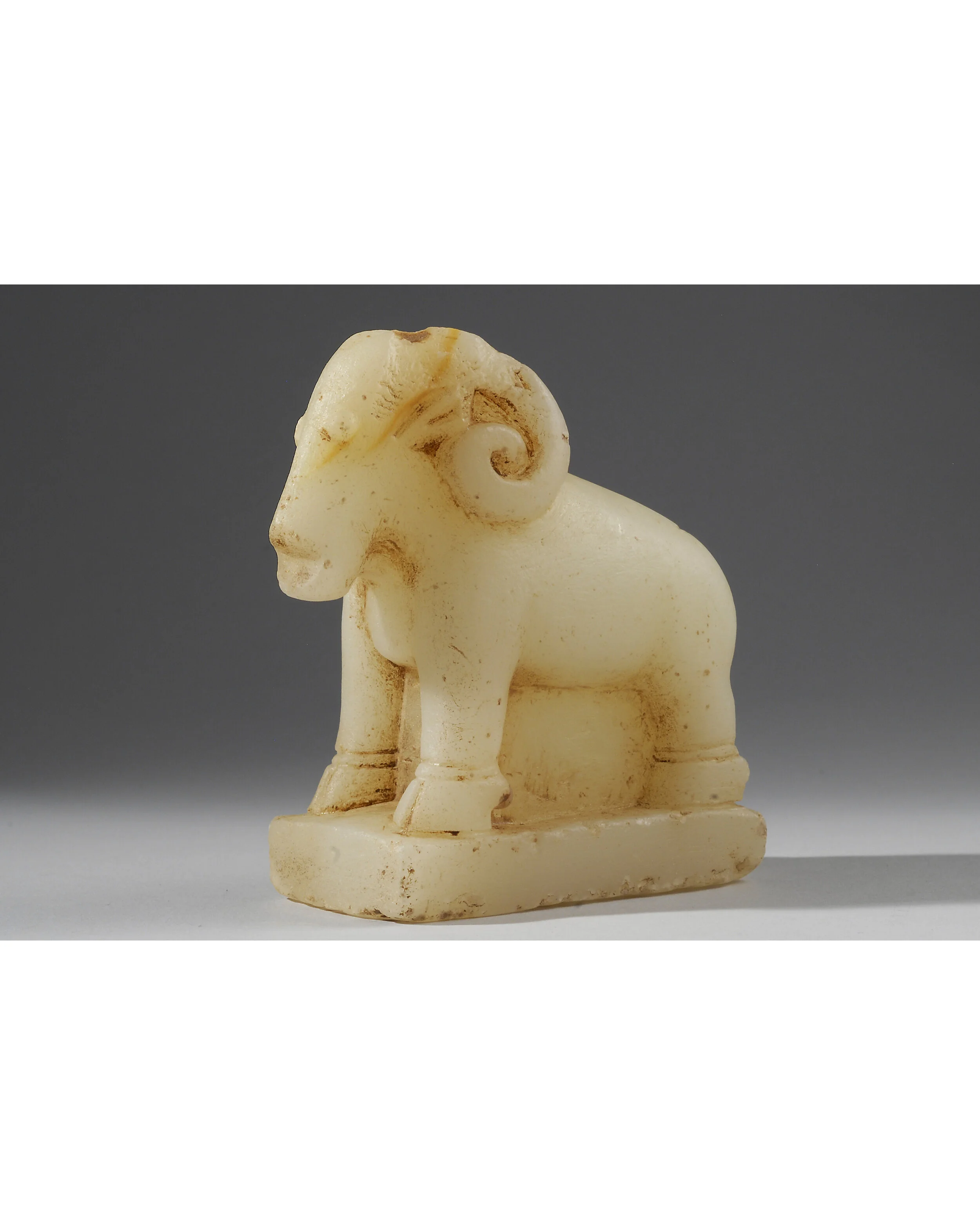Ancient Sumerian Copper Head of a Bull
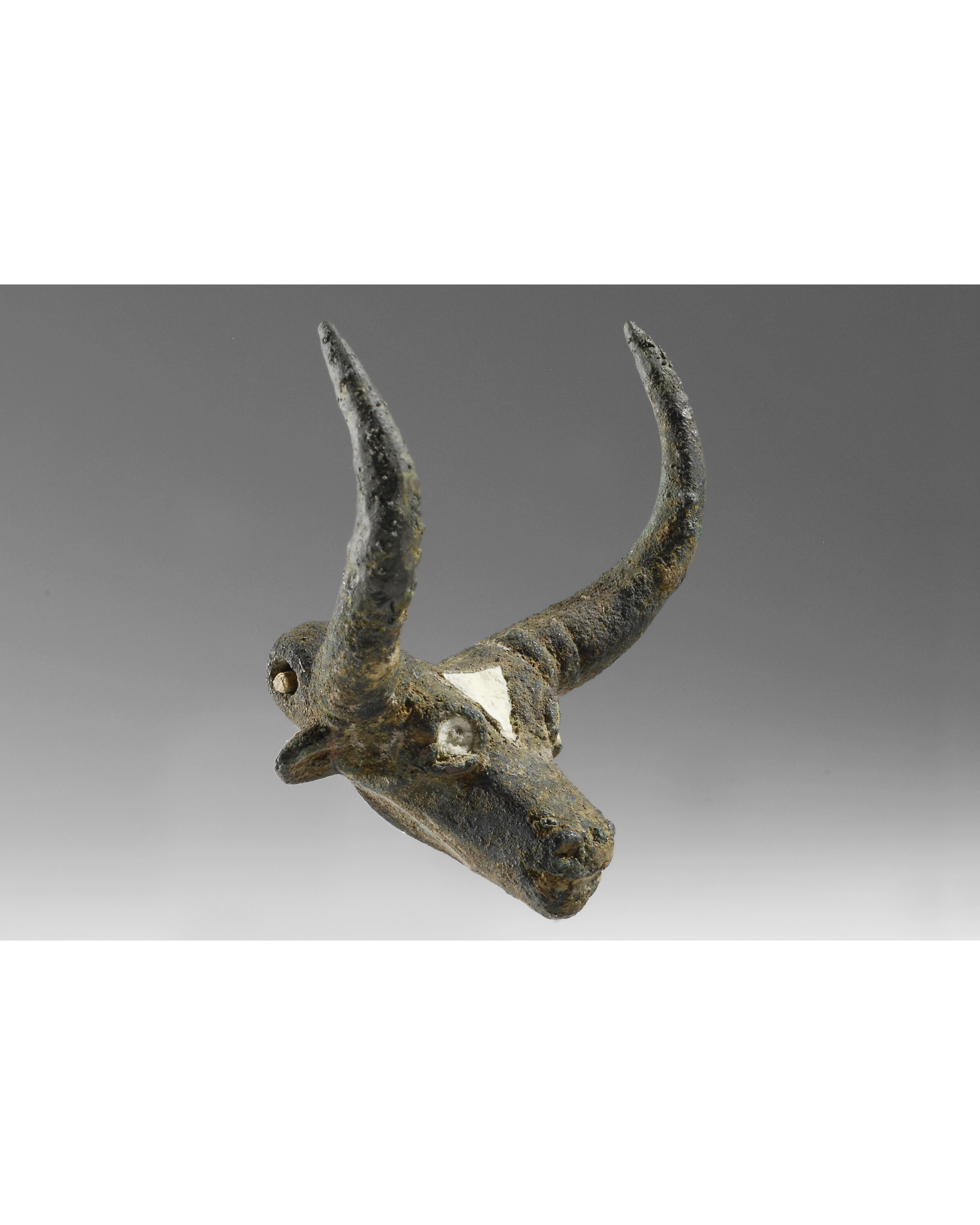
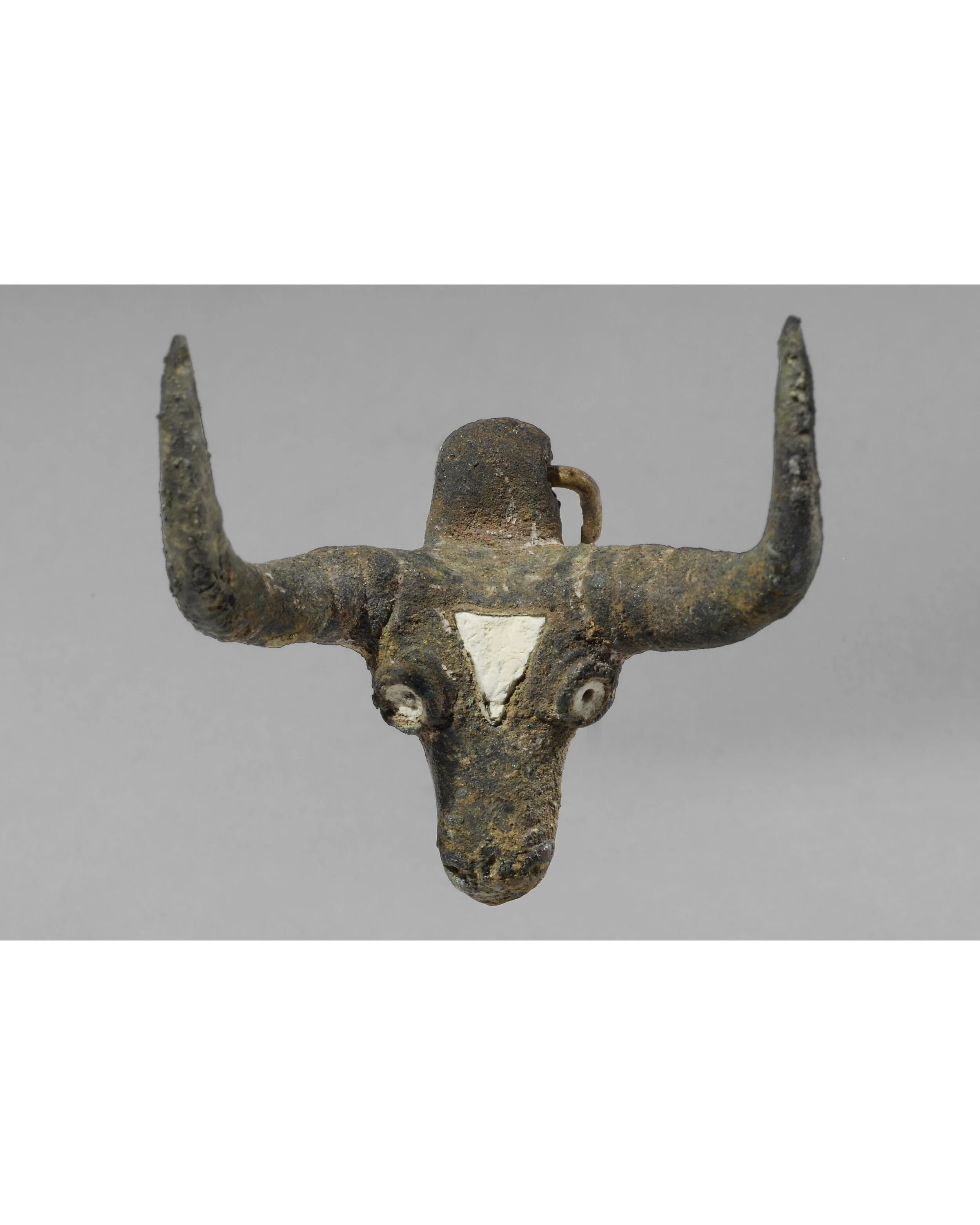

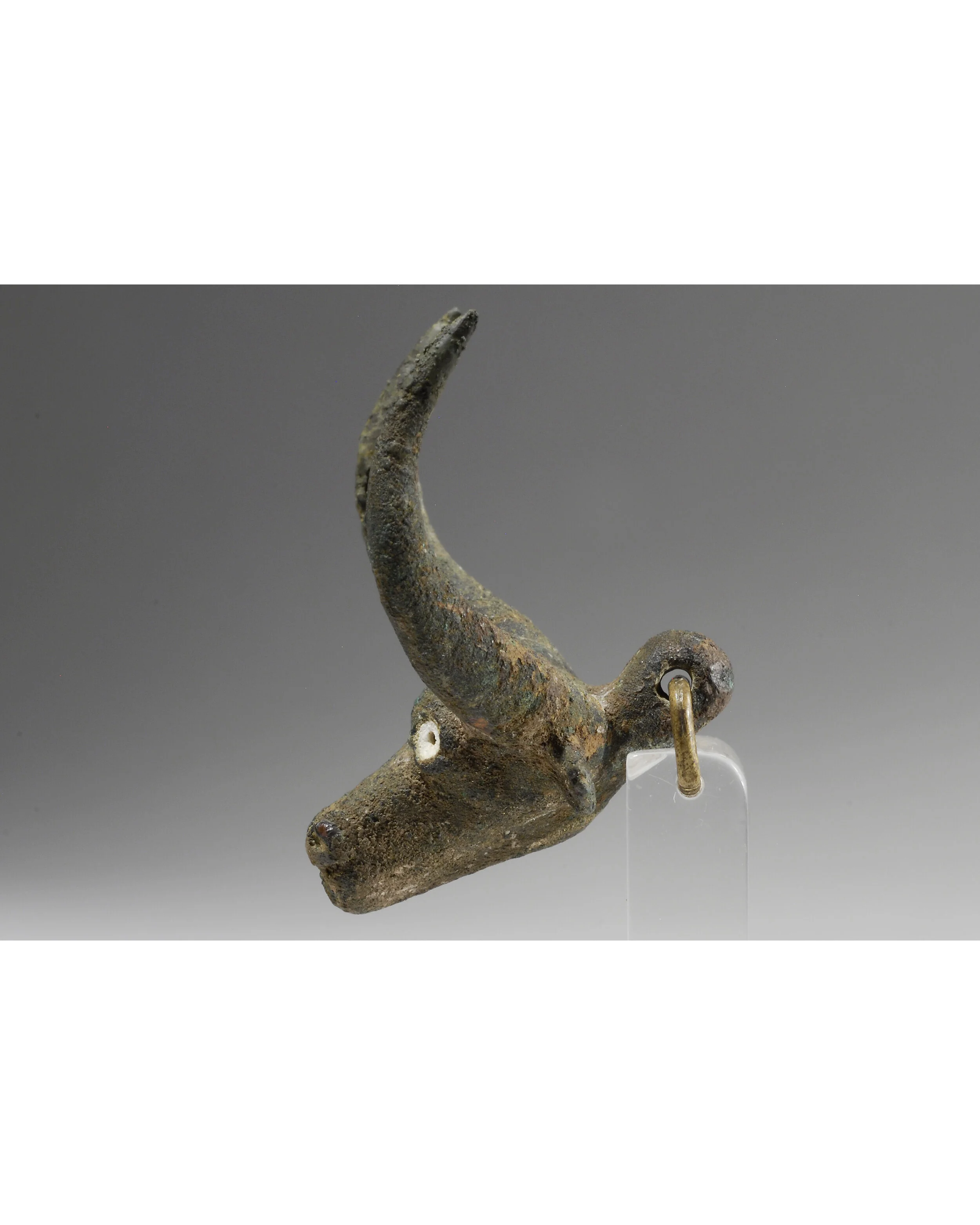
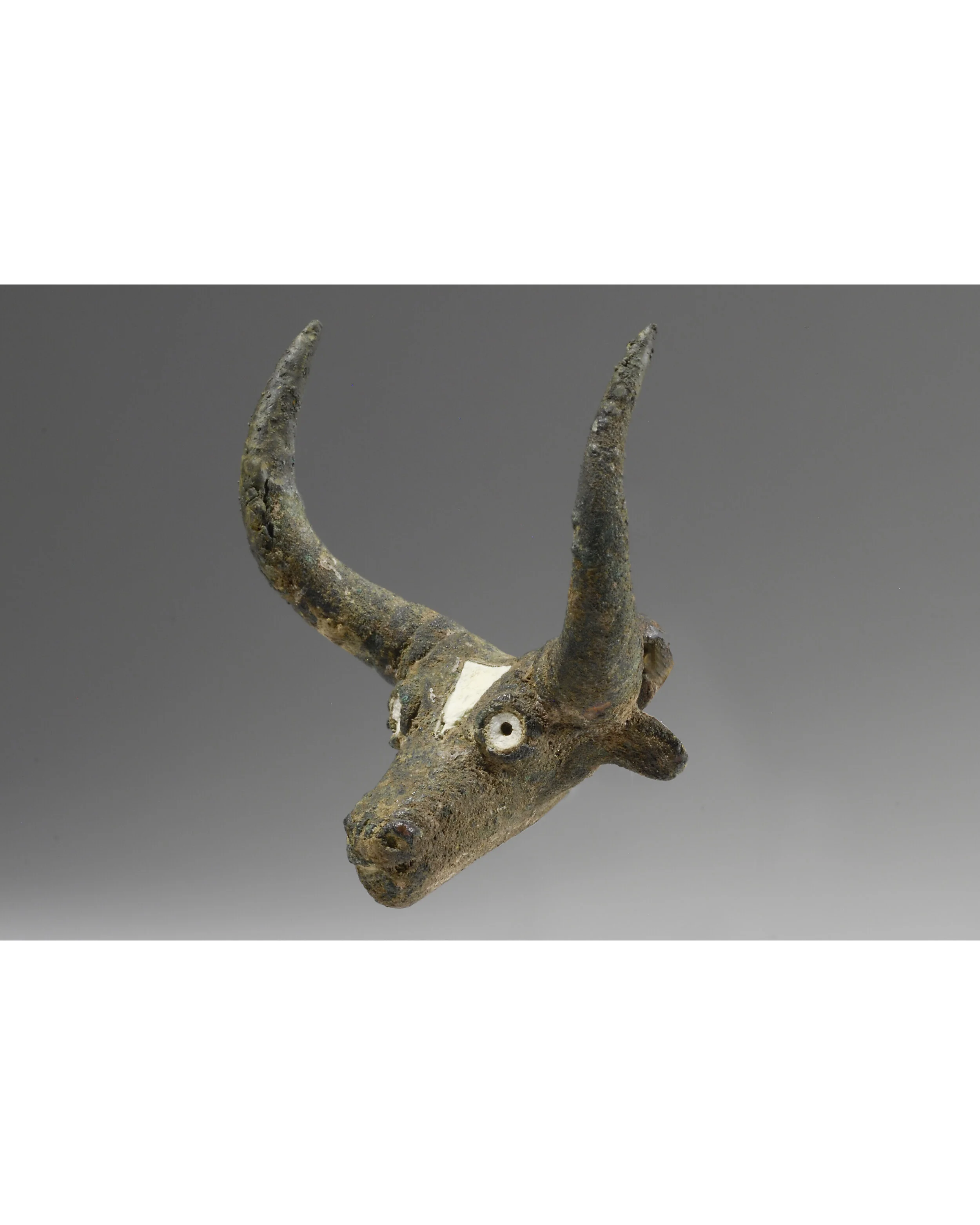

Ancient Sumerian Copper Head of a Bull
Sumerian, 3rd millennium B.C.
Copper
H: 3.5 cm
Serial: 17184
Provenance: Ex- J.P. Barbier collection, 1970
Published: Catalogue Bronzes Antiques de la Perse, Paris Hotel Drouot, 27 Mai 1970, no. 174
This charming copper head of a bull is solid cast and was probably fashioned using the lost wax technique. Certain details were cold incised with the help of a pointed tool (lines adorning the base of the horns, the folds of skin around the eyes and near the nostrils). The eyes and a triangle on the forehead, which reproduces, in a stylized fashion, the tuft of hair that bulls and calves have in that spot, were inlaid in shell or white stone; the pupil, made of another material but lost today, would have been inserted into the ocular cavities. Soldered in a single piece with the rest of the head, a circular tenon, pierced with a hole, is placed vertically on the back of the piece at the level of the horns. This element was certainly used to fix the head in its original place, the actual nature of which is unknown: the small size of this appliqué and the subject chosen suggest a musical instrument, like the famous harp of Ur. Stylistically, the shapes of this animal are simple and geometric, but the animal is easily recognizable as a bull: the head is triangular with two long, sinuous horns and a muzzle that ends in a straight cropped cylinder. The circular eyes are surrounded by thick folds of skin that probably represent the lids, the small nostrils are round and the mouth is a simple horizontal dash. The ears, placed behind the horns, are in the form of lance-shaped leaves. Along with gold, copper was the first metal that man had available to work with (around 8000 B.C.). It was easily found in nature, where it was a mineral in its native state: like with gold, the working of copper would have commenced with the hammering of small blocks of the pure metal that had been heated beforehand (forged copper). The first traces of melting techniques came some millennia later (around 6000 B.C.). By the end of this period, different alloys had been created and were more or less widely used: copper was often mixed with lead, arsenic, antimony and tin. By the end of the 4th millennium, the use of bronze (an alloy of copper with variable quantities of tin, usually around 10%) generally took its place for the making of tools, since the metal’s qualities of resistance were much improved thanks to the use of tin. Its use progressively improved the different metal objects made in the following millennium. Nevertheless, throughout the Bronze Age, (3rd millennium B.C.) and even afterwards, it is not rare to see some objects – statuettes in particular – in copper, often mixed with arsenic: this alloy possessed a low melting point and a fluidity that was particularly important for the creation of molded or cast objects that were very precise or highly detailed.









